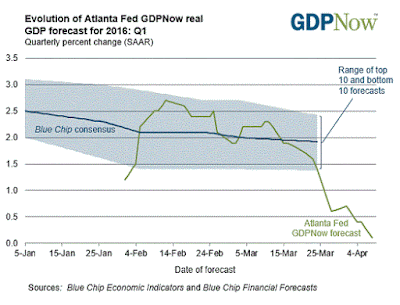Consumer Sentiment: Final Result for April 2016
Predicted: 90.4
Actual: 89.0
Change from last month: -2.198%
Change from one year ago: -7.195%
===============
The Consumer Sentiment Index is compiled on a monthly basis by the University of Michigan; 500 U.S. households are queried about their own financial circumstances and about the economy in general. 200 questions are asked, e.g. "Do you think that right now is a good time to purchase a major household item, like a new microwave oven, TV set, or a new sofa?"
The Consumer Sentiment Index uses a 1966 baseline, i.e. for 1966, the Consumer Sentiment Index = 100. So any number that is below the 1966 baseline of 100 means that the folks who were polled recently aren't as optimistic about the U.S. economy as the sample that was polled back in 1966.
The Consumer Sentiment Index is similar to the Consumer Confidence Index in that they both measure consumer attitudes and offer insight into consumer spending.
The "predicted" figure is what economists were expecting, while the "actual" is the true or real figure.
Previous Consumer Sentiment reading was 89.7.
Click here to view the full University of Michigan report.
Labels: consumer_sentiment
|
--> www.FedPrimeRate.com Privacy Policy <--
> SITEMAP < |






